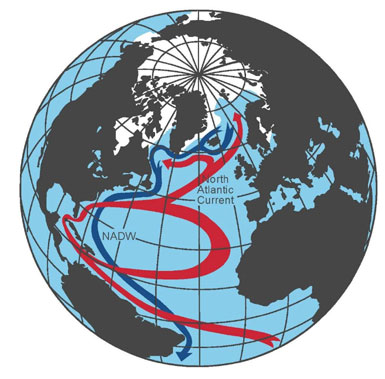Ouch! 63.5°F in Antarctica?!
After reaching its highest temperature EVER, can we really keep calling Antarctica the coldest place on Earth? The record temperature occurred on March 24, says Weather Underground, after reaching 63.3°F the previous day.
While this seems unheard of, in 1961, temperatures reached 62.8°F for one day.
But not in autumn, says Weather Underground. December is typically the warmest month at the "bottom" of our planet, with average temperatures of 37.8°F, according to NOAA.
In March, the average temperature is 31.3°F. And while we can’t jump to conclusions over temporary aberrations in temperatures, average temperatures are 5°F higher than 50 years ago – about the same as the Arctic, according to the British Antarctic Survey.
Read our article, Scientists Fear Pace of Antarctic Ice Melt.
Not Surprisingly, Sea Level Rising Faster Than Predicted
Meanwhile, projections of sea level rise are being revised significantly upward – to 3.1 millimeters a year since 1993, says Climate News Network.
That’s a big difference from 1-2 millimeters a year, which has been the consensus.
We’ve written about the variety of satellites that have launched over the past year, providing much more accurate data than ever before.
Not surprisingly, sea level rise has been quickening since 1993. About a third of the increase is due to warmer oceans – which expands water – and the majority is from melting ice and increasing run-off from land, according to the IPCC.
It’s widely known that IPCC projections have been too conservative – the pace of climate change is proceeding way faster than they expected, and the same is likely true about sea level rise.
Atlantic Conveyor Belt Slowing Down
One by one, our worst nightmares are coming true. The Arctic, Antarctica and Greenland are quickly melting, and now we hear the all-important Atlantic Conveyor is weakening.
In our part of the world we call it the Gulf Stream, an "invisible river" that keeps temperatures moderate along the US east coast and all the way to the UK and Europe. Without it, these northerly places would be much colder and sea levels could be much higher from New York northward.

Flowing in two directions simultaneously, the Conveyor brings warm water from the equator northward, and cold water from Greenland southward.
The temperature differential between these warm and cold waters is one of our planet’s most important climate engines, say scientists. This great circulation of water also supplies oxygen and nutrients in the world’s oceans, potentially causing disruptions in marine ecosystems for thousands of years.
"We have detected strong evidence that the global conveyor has indeed been weakening in the past hundred years, particularly since 1970," says Stefan Rahmstorf, an ocean physicist at Germany’s Potsdam Institute for Climate Impact Research.
Of major concern is evidence that circulation could slow abruptly causing sharp, quick shifts in climate. The system is the weakest in 1100 years.
"The human-caused mass loss of the Greenland ice sheet appears to be slowing down the Atlantic overturning – and this effect might increase if temperatures are allowed to rise further," says Jason Box, a glaciology professor at the Geological Survey of Denmark and Greenland.
Read the research announcement:
